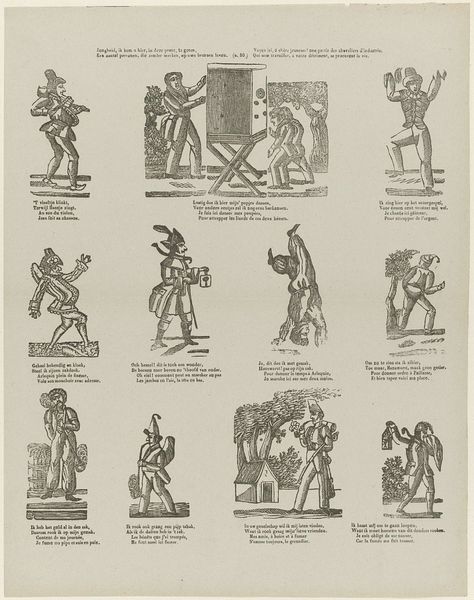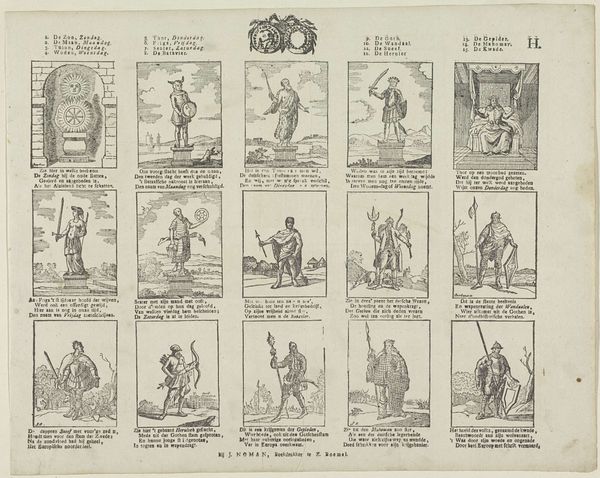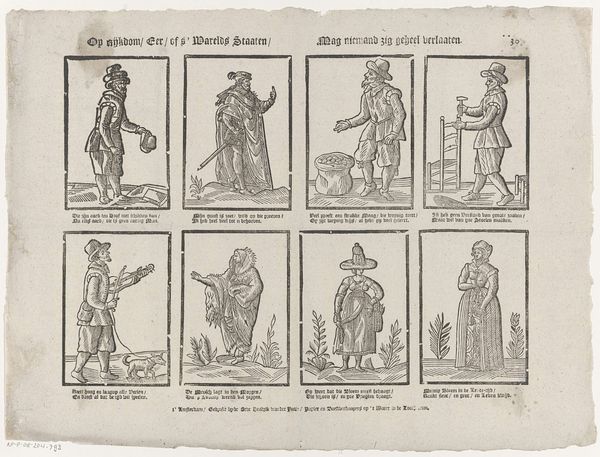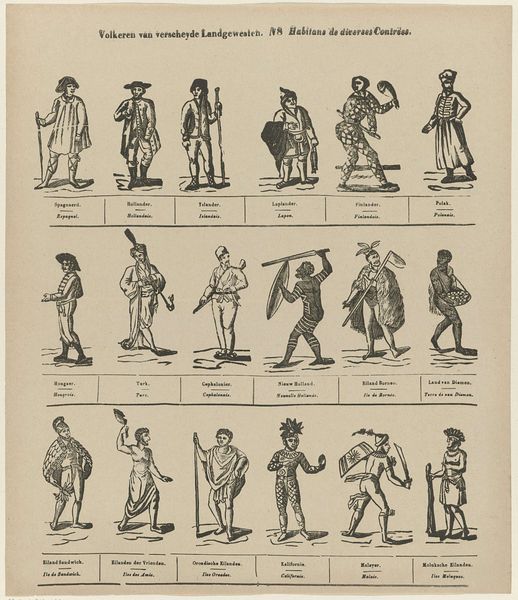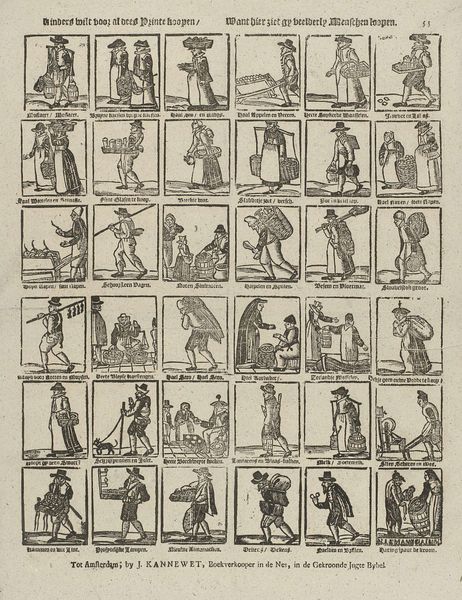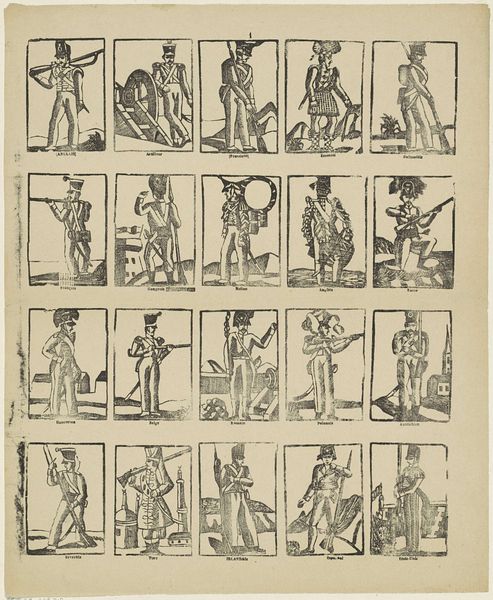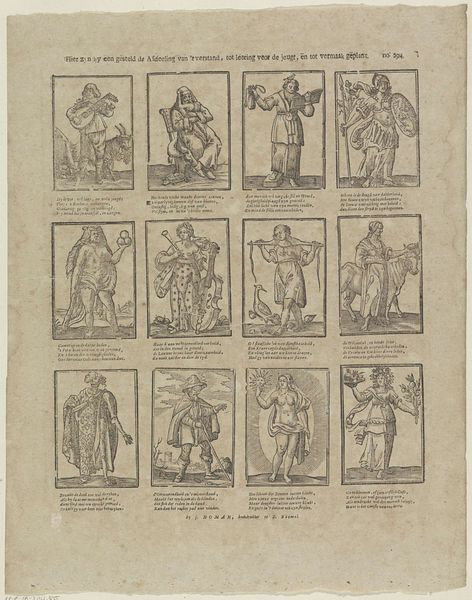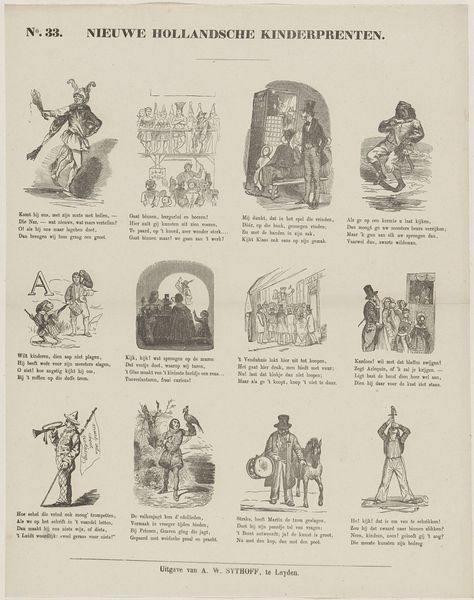
Lieve Jeugd, wil U vermaken, met deze prent, neeemt U Plaizier, / Het zijn voor U bekende zaken, die gij hier vindt op het papier 1828 - 1850
0:00
0:00
broesecomp
Rijksmuseum
print, engraving
#
narrative-art
# print
#
comic
#
genre-painting
#
engraving
Dimensions: height 333 mm, width 413 mm
Copyright: Rijks Museum: Open Domain
Curator: Here we have a print from the period of 1828 to 1850 by Broese & Comp. currently residing at the Rijksmuseum. The title, rather a mouthful, is: "Lieve Jeugd, wil U vermaken, met deze prent, neeemt U Plaizier, / Het zijn voor U bekende zaken, die gij hier vindt op het papier". It roughly translates to "Dear youth, entertain yourself with this print; take pleasure in it, as these are familiar matters you find here on this paper." Editor: Well, my first thought is it looks like a sheet of memes! The arrangement of figures in these little octagon frames is very appealing. A sort of early comic book, perhaps? Curator: In a way, you're quite right. It operates similarly to modern comics through sequentially organized frames and a clear emphasis on accessibility to a young, broad audience. The engravings demonstrate common figures and scenes aimed at providing amusement. This reflects broader social trends of the time, the growing printing industry creating images to reinforce dominant narratives. Editor: Seeing this artwork, my eye is caught by the materiality. Consider the engraver laboriously creating the printing plate by hand, transferring it to paper and how it affects how it was made, distributed and even viewed. It speaks to a pre-industrial, craft-based mode of image production that carries a very different value. Curator: Precisely. The publishers marketed themselves as book printers and book sellers. This speaks volumes about the democratization of information. These visual narratives acted as accessible entry points to contemporary societal values and concerns for Dutch youth. Editor: It’s also fascinating to think about what 'familiar matters' means in the title, and what messages were being imparted through accessible, mass-produced media. Curator: Indeed. Examining images such as this, we gain perspective into the visual culture through the very specific cultural and historical lens from which these images were derived. Editor: And for me, I see how deeply enmeshed the aesthetic experience is within social conditions, like a manufacturing mode for influencing the tastes of young people and its effect of production value.
Comments
No comments
Be the first to comment and join the conversation on the ultimate creative platform.

